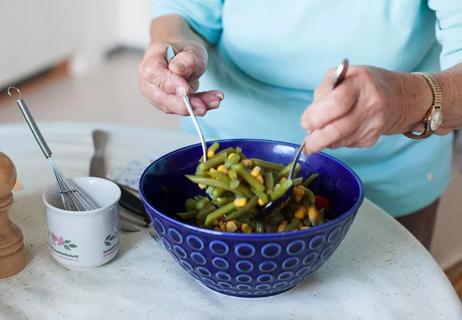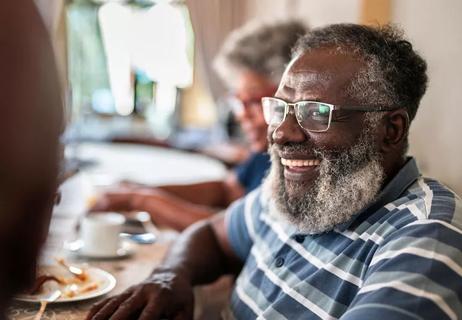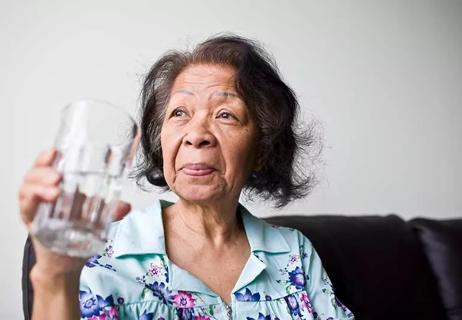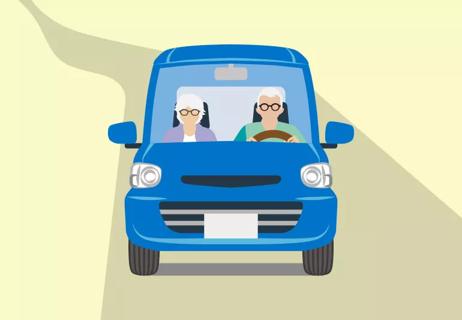Some planning, products and projects can help older adults stay in their homes safely longer

Living at home: It’s a heartfelt desire shared by the majority of aging adults as they enter their twilight years. But that can slip out of reach as the wear and tear of life builds with every birthday.
Cleveland Clinic is a non-profit academic medical center. Advertising on our site helps support our mission. We do not endorse non-Cleveland Clinic products or services. Policy
But there are simple ways to make “aging in place” workable for you or someone you love. Some planning and a few DIY projects can help those who are older continue to live independently.
There are definite benefits to staying in a longtime residence, after all. Of course, there also are added risks. Let’s take a closer look at the pros and cons and ways to make it work with geriatric specialist Ami Hall, DO.
Familiar surroundings offer comfort. That’s perhaps the simplest way to sum up the psychological, emotional and physical benefits often attached to aging in place.
“Nine times out of 10, people want to stay in their home as they age,” says Dr. Hall. “That’s where they’ve spent a good part of their life and made memories. That’s where they’re more comfortable.”
Maintaining a longtime address also can help:
Think of all the things you do every day as part of … well, just living and taking care of yourself. These routines serve as a heartbeat to daily life while keeping people physically and mentally active.
“Being able to set and follow your own schedule can be very empowering,” says Dr. Hall.
Assisted living centers offer staff dedicated to providing care — and that comes at a cost. Bills for long-term care can quickly deplete a lifetime of savings. Aging in place can eliminate the need for that expense.
If you’ve lived in your house for decades, you know every inch of the place — right down to the third step on the stairway that squeaks when you step on it. That familiarity can lessen confusion as you age.
“Maintaining that continuity can be very helpful, especially for those with a cognitive impairment or memory issues,” notes Dr. Hall.
Relationships built over years of living in a community can be helpful as people age. “Neighbors keep an eye out for each other,” states Dr. Hall.
Aging in place may be a goal for many people, but that doesn’t mean it’s always the right answer. Here are four reasons why it might not be the best option:
More than 36 million falls are reported annually among the 65+ crowd in the United States. On average, that means an older adult somewhere in the country is falling every second of every day.
Many of these falls can be traced to tripping hazards in homes. Steps and stairs also can become a danger. “As people age, they tend not to lift their feet as high when they walk,” says Dr. Hall. “Anything that’s a raised surface could cause a fall.”
If an older adult is living alone, a fall could leave them injured and unable to contact anyone for help, too.
A 2020 report by the National Academies of Sciences, Engineering and Medicine declared social isolation and loneliness as a “serious yet underappreciated” public health risk among older adults.
The study found that approximately 1 in 4 older Americans could be considered socially isolated. That status increases the risk of:
Living alone, the loss of family and friends, illness and even hearing loss can contribute to feelings of isolation, says Dr. Hall.
Older adults may be less able to handle emergency situations (like a fire), extreme weather (floods, tornadoes or snowstorms) or the loss of utilities (such as a power outage that cuts heat or air conditioning).
Maintaining a home isn’t easy. Scrubbing toilets, vacuuming rooms and doing any number of never-ending chores is exhausting. (And we haven’t even mentioned heading outside for yard work.)
Simply put, housework can become a burden — and paying people to do jobs can be expensive. “Keeping up with a house can become a real problem as people age,” Dr. Hall continues.
If you or someone close to you chooses to age in place, plan to make some adjustments and modifications within the home. The reality is that most folks get a bit less spry with age. Your residence should reflect that fact.
Eliminating falling hazards should be a major focus of the to-do list. (To reiterate what we mentioned above, falls are the leading cause of injury for older adults.)
So, let’s look at a few products and projects that can make aging in place a bit safer.
Bathrooms tend to be a particularly hazardous part of any home — especially as we get older. Data from the U.S. Centers for Disease Control and Prevention (CDC) shows that injury rates around tubs and toilets increase with age.
Seemingly routine bathroom tasks that once didn’t warrant a thought — like getting up off the toilet or taking a shower — can suddenly become a challenge as the years add up.
The solution to minimize fall risk? Grab bars.
A grab bar can help you keep balance while stepping in or out of the tub, a movement that involves a slippery surface and requires you to stand on one leg for a moment. Grab bars also can provide a stable hold while getting up off the toilet.
Unfortunately, an estimated 42% of people who might benefit from these easy-to-install devices don’t have them in their homes, researchers found. That adds up to more than 5 million Americans age 65 or older.
“People are often in denial that they need grab bars, or they’re embarrassed and feel like there’s a stigma,” explains Dr. Hall. “But it is very important to have them.”
Aside from grab bars, other easy, low-cost ways for you to create a safer bathroom include:
Raised toilet seats also can be purchased to make it easier to get up and sit down. If you’re up for a larger project, consider installing a comfort height toilet to get those extra few inches of height.
Adding eye-level shelves for lotion, toothbrushes and other toiletries also is a good idea to minimize reaching up into cabinets or digging through lower storage areas.
Aging brings changes to your eyes that can make your vision cloudy. But a little extra lighting can help you see things a bit more clearly.
Updating a home’s lighting can create brighter rooms that are easier to navigate. Use brighter bulbs in fixtures, too. (One word of caution: Make sure the bulbs you use don’t exceed the maximum wattage rating of the light.)
Night lights also are recommended to guide any midnight-hour walks through a dark home. Low-cost lights also can be added along stairways to illuminate each step, which is key as depth perception often declines with age.
“Anyplace that’s a high-traffic area, you’ll want to make sure it’s well-lit,” advises Dr. Hall.
New gadgets in the market can help older adults live at home longer while offering peace of mind. These innovations provide a safety net through what has been called “connected independence.”
Smart technology can be used to:
Dr. Hall’s checklist to make a home a safe, long-term living option for older adults also includes:
If the goal is to age in place, Dr. Hall recommends beginning to make changes before the situation demands it. “Don’t wait until there’s an issue,” she says. “It’s never too early to begin creating a safe, long-term living environment.”
Learn more about our editorial process.

Staying active and doing what you love may increase both your confidence and your balance

Loneliness is a key factor in worsening mental health among seniors

Age-related physical changes and personal circumstances can impact healthy eating

Living longer is more than just growing older — it’s also about living life to its fullest

Body changes put older adults at increased risk of dehydration

Turns out your health really is in your hands

Play games, pick up a hobby, stay social and get moving!

What to look for and how to handle signs of impaired driving

Your metabolism may torch 1,300 to 2,000 calories daily with no activity

A gentle touch in all the right places may help drain your sinuses